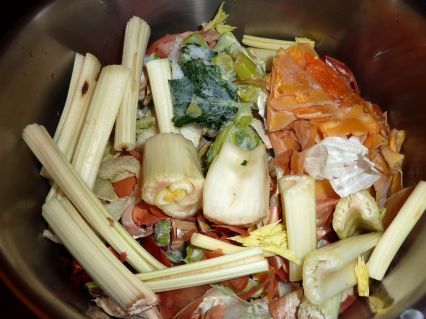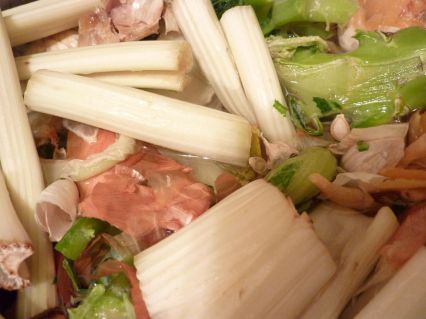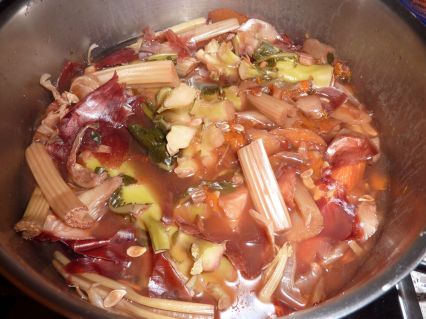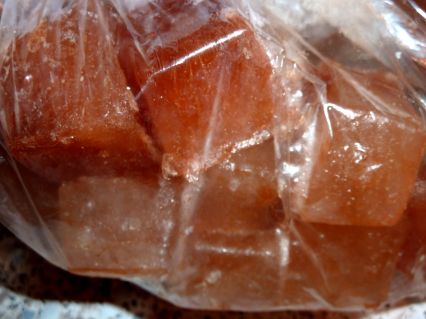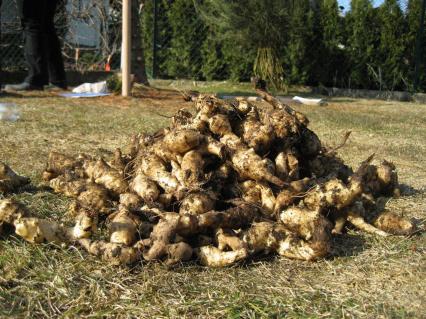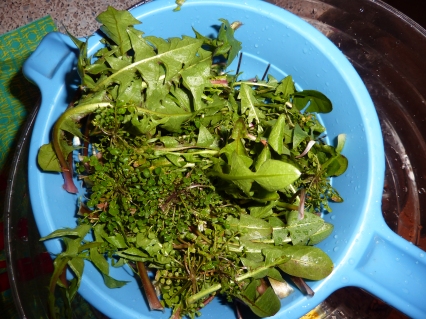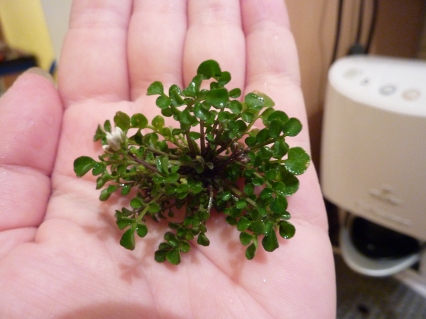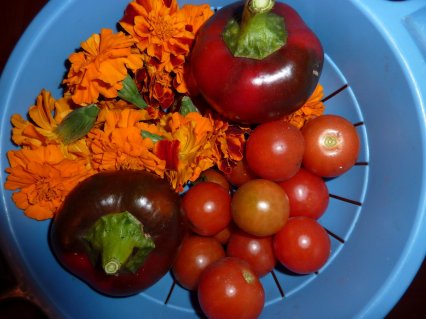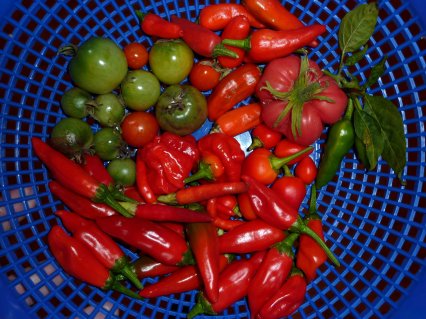Overall, the last two months were very stressful, because of personal, family, work and study issues… the gardens are a way for me to relax. And now I’m back to show off my harvest! Thank to Daphne from Daphne’s Dandelions for hosting Harvest Monday!
In the parents’ garden, most of the Asian greens, radishes and lettuce are out and have been replaced by the summer crops: hot peppers, beans, tomatoes of course, but also cape gooseberries and tomatillos, both of which I’m trying for the first time this year. The cape gooseberries are a little behind, but the tomatillos are starting to set fruits. Tomatoes look okay so far, the weather during the last ten days wasn’t ideal for them, but most are flowering, some started to set fruit. I’ll post some pictures soon. No harvest from the balcony this week, the parents’ garden provided more than enough.

Potatoes! approx. 1 kilo from one plant

Lavender
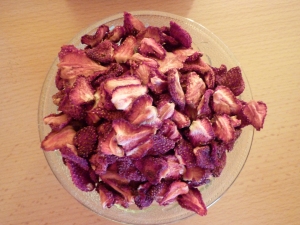
4,3 kg strawberries from the strawberry field were mostly dehydrated or made into jam
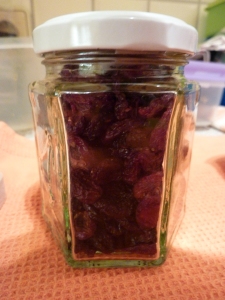
Cherries from my parents' tree were dehydrated or canned

Radish pods. Lots of them, more than 0,5 kg (one pound). These plants are really, really productive, unfortunately I had to throw half of them out because they took up so much space. It seems like they are slowing down anyway

The snow peas are grown on a space of maybe 1-1,5m² and produce about 1-2 pounds per week - and that's only the pods that I find! I wasn't very careful with staking, so the plants are just a tangled mess, but productive anyway. And the taste? Wonderful!

Mizuna, already chopped up and packed for storing in the fridge. Unlike other Asian greens, it goes bad pretty quickly, so using it before it spoils is quite a challenge - especially if you harvested 5 kilos over the last 10 days! Mizuna grows on a 0,5-1m² plot and by now I harvested probably half of it.
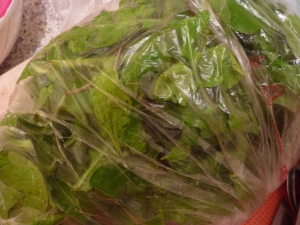
I cut some arugula before we'll throw it out due to bolting
Overall, I feel like I’m spending a lot of time in the garden – about 8-10 hours per week – and with my food – maybe another 8 hours per week. The whole washing, chopping, cooking, canning, dehydrating is fun, but time consuming. Anyhow, I now understand a little better what it means to feel a connection to your food.
 Complete Gardener by Monty Don
Complete Gardener by Monty Don